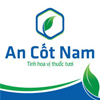Overview of C language:
- The C language is a language that has existed for a long time, the imperative language was born in the early 70s.
- The C language is a structured language and is classified as a third-level language (a higher-level language than the machine language and lower than the object-oriented language – level 4).
- The C language is not only popular in writing applications. It is also a very effective language for writing system software.
- Originally developed by Dennis Ritchie to develop the UNIX programming system at Bell Labs.
- Large operating systems Windows, Linux, … are influenced by the C language.
Application of C language:
Operating system.

The C programming language can be used to design system software. Such as operating systems and compilers. Writing UNIX operating system scripts is the primary purpose of creating C. The C language is an integral part of the development process of many operating systems. Unix-Kernel, utilities and applications for the Microsoft Windows operating system and a large portion of the Android operating system were all scripted in C.
Develop new languages.
The second application of c language is that it is the basis for new language development. Because it has a direct or indirect impact on the development of many languages including C ++ with C classes, C #, D, Java, Limbo, JavaScript, Perl, UNIX’s C Shell, PHP and Python and Verilog. These languages use C in mutability: for example, in Python. C is used to build standard libraries. While other languages such as C ++, Perl and PHP have a C-based syntax and control structure, it is therefore called the “grandfather” of programming languages.
Calculation platform.
The C language implements algorithms and data structures quickly. Facilitates faster calculations in programs. This has allowed the use of C in applications requiring higher levels of computation such as MATLAB and Mathematica.
Embedded System.
The features of C include direct access to the machine’s hardware API, the presence of the C compiler. In addition, C programming also uses resource identification and dynamic memory allocation. C language becomes the optimal choice for applications and drivers of embedded systems.
Graphics and games.
In addition to the above applications, the C language is also used in graphics and game programming. It has been used to develop a wide range of graphics and gaming applications, such as chess, bouncing balls, archery, etc.
So we can see that language has been around for a long time, but its applications and popularity are still great. With its wide range of features and applications, C programming is still a “veteran” in the programming industry.
What will students get in the course:
- Understand the usage of C language:
- Know how to add libraries.
- Know how to declare variables.
- Know how to import and export data.
- Understand how iteration works (In C as well as other languages):
- For loop.
- While loop, do-while.
- Understand the basic structure of a programming language:
- Array structure.
- String structure.
- Familiarize yourself with some basic algorithms,
- Know how to write functions.
- Familiarize yourself with recursive algorithms.
